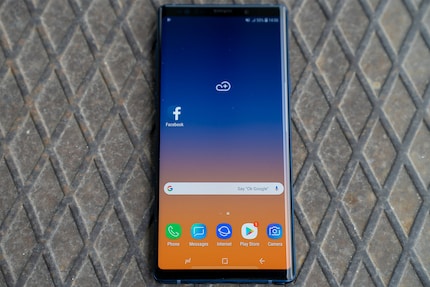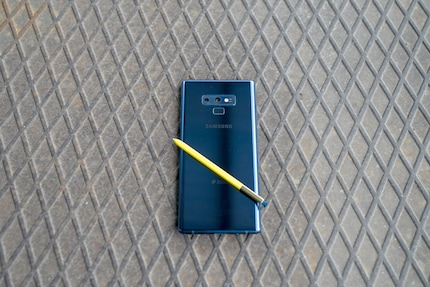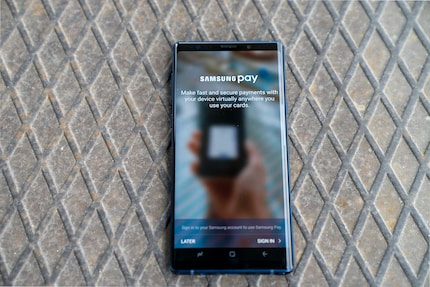
Samsung Galaxy Note 9: The end of the Note series? Hopefully not.
The Samsung Galaxy Note 9 is supposed to be the last Note. Or maybe not. Has the stylus had its day? And is the phone more than just a pen holder? First impressions of Samsung's secret flagship.
The Note 9 is on my desk in duplicate, just in time for the launch. I've been looking forward to the device for weeks, because not only do I like the pen concept and phones in general that dare to be a little extravagant, but the specs under the bonnet also promise a lot.
The Exynos 9810 may not be a Snapdragon, but based purely on the specs, the Samsung chip is probably only slightly inferior to the industry's de facto standard. But the chipset is not what amazes me at first glance. No, it's the screen.
The marvellous screen
The Note series is historically the series with the large screens. However, since the Galaxy S series can now also boast screens that are up to 6.2 inches diagonally, Samsung has not only tweaked the size of 6.4 inches - the Note 8 was 6.3 inches diagonally - but also the colour values. The AMOLED display glows in vibrant, beautiful colours and the colour gradient of the standard home screen wallpaper from blue to yellow is impressive. Because even if you don't like blue and yellow, the seamlessness and saturation of the colours will certainly appeal to you in terms of the technology.

The screen is huge and the colours are rich and vibrant.
The screen is flatter than that of the Galaxy S9, probably to give you more room to work with the stylus. I like Infinity Screens - the rounded screens - but such a wide surface is impressive.
But the Note 9 is heavy. It exceeds the psychological limit of 200 grams and weighs one gram more, 201 grams. But it packs a lot of power behind the screen.
Finally enough battery
When studying the specs, I paid particular attention to the battery, as it was weak in the S9 and barely acceptable in the S9+. The Note 9 is supposed to have 4000mAh. If the system consumes as much power as the S series, then the battery will easily last into the night. However, as the phone has been on my desk for two hours, I can't say anything about it yet.
The Note 9 also comes with 8 GB of RAM. This should make it difficult to even begin to slow down the phone. I like the idea, because that's what the Note series is all about: it's designed for power users. For people like me who regularly overload or even overload their phone. For me as a phone tester, it's almost a sport: how much can the phone take? Can I bring it to its knees?
The camera with 12 megapixels and a light sensitivity of f/1.50 has been improved compared to the S series. That's a good thing, because even though low-light photos are all the rage this season, the S9+ left something to be desired. Will the Note 9 do better?
The end of the Note series?
Before the launch of the Note 9, experts and observers on the scene were talking the Note series to death. The Samsung Note 9 is the last model in the Note series. After all, the Galaxies are already so big. Whether this should really be the end of the Notes, I'll leave you with the answer.

But it's not just size that's responsible for the success of the Note series. It's about speed, power, efficiency and - of course - showing off. Because a device like this is something to be proud of. No one will be able to deny that the Note 9's performance on paper is right up there with the best.
The software plays its part. The Note 9 runs on Android 8.1 with Samsung's user interface called Samsung Experience in version 9.5. Unfortunately, Bixby is also back and the race to reconfigure and block it continues. However, the manufacturer from South Korea has achieved a major success with the Samsung Pay drawer.
In Switzerland, we use Twint. Or we could. Samsung Pay is Samsung's solution for paying with your mobile. The app is embedded in a drawer at the bottom of the screen, barely noticeable. When you pull it up, Samsung Pay starts. The app is quickly accessible wherever you need it. That's how it should be. Not just "We're changing so we don't look like Google. Awww." Or superfluous menus that duplicate other elements of Android, but real utility. Good work, Samsung.

Samsung Pay is powered at the bottom of the screen
The problem here is simply that I don't see much of a future for Samsung Pay - just like Twint. In the end, the race will probably be decided between Android Pay and Apple Pay. This is simply because the two app manufacturers will be more widespread. In the case of Twint, each bank has its own version. Who decided this and then thought "Yes, yes. Great idea!"? Samsung does something similar, but Samsung is more widespread than Zürcher Kantonalbank.
The first impression? I like the Samsung Note 9. It looks stylish, especially in blue, performs well and has a stunningly beautiful screen. According to the specs, it should have plenty of power and, for the first time, Samsung's UI has a right to exist.
However, the test will show whether it all works as promised.
Journalist. Author. Hacker. A storyteller searching for boundaries, secrets and taboos – putting the world to paper. Not because I can but because I can’t not.


